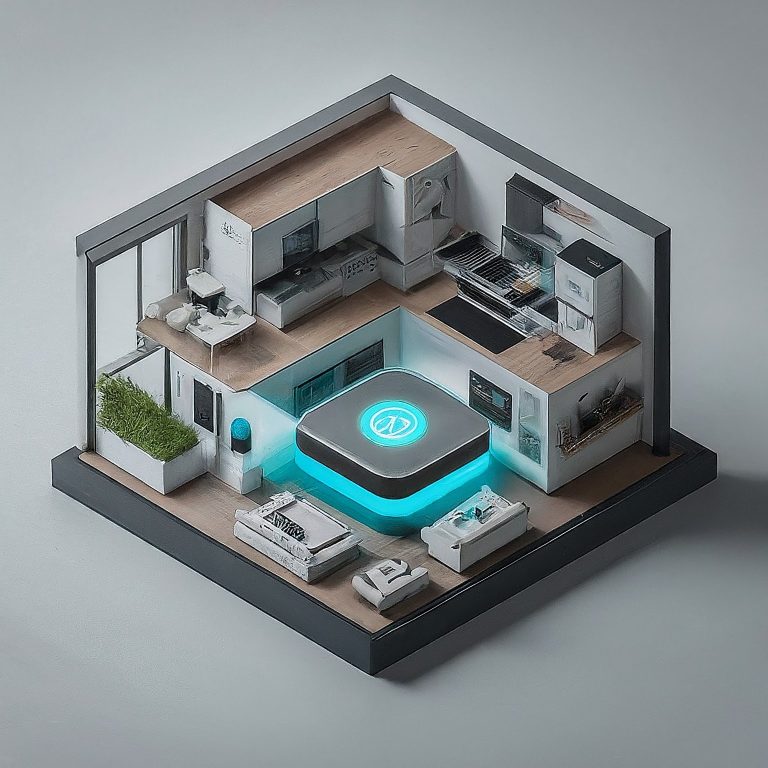Smart homes are an ecosystem of intelligent systems and devices designed to automate and enhance homes. In recent years, the term smart has been connected with any technology that uses some level of Artificial Intelligence (AI). Adding smartness into homes could enhance comfort, healthcare, security, and energy conservation. This type of smart technology has become widely accepted, bringing ideas like Smart Home Systems (SHS).
Smart technologies do not apply to dwellings only, they include smart cities, smart manufacturing, and more. However, Smart Home Systems is only a division of smart computing that includes integrating AI technologies into homes to achieve a higher quality of life.
This article will focus on AI integrations within smart homes and explore how different AI fields integrate within smart home devices and systems. We will explore how those integrations work, and look into frameworks, libraries, and applications.
Let’s get started.
About us: viso.ai provides Viso Suite, the world’s only end-to-end Computer Vision Platform. The technology enables global organizations to develop, deploy, and scale all computer vision applications in one place. Get a demo.
Understanding AI in Smart Homes
Smart homes have evolved over the years, making AI the main aspect of its operations. Without AI, we wouldn’t have had the level of intelligence and automation that makes a home truly “smart”. Even early smart home technology had some basic AI logic. To understand smart home technologies more let’s first get a handle on what AI is. Then we’ll look into how we can integrate it into smart homes.
What is AI?
Artificial intelligence (AI) is a technology that allows machines to learn and simulate human intelligence. When this is combined with other technologies, AI can perform many tasks, like in smart homes. However, AI is a broad term, encompassing any machine mimicking human intelligence.
AI has two sub-disciplines, machine learning and deep learning (deep learning is also a sub-discipline of machine learning).
Both Machine Learning (ML) and Deep Learning (DL) use the concept of Artificial Neural Networks. Neural networks are programmatic structures that researchers modeled from the decision-making process of the brain. Neural networks consist of interconnected nodes in multiple layers. ML and deep learning differ in the type of neural networks used.
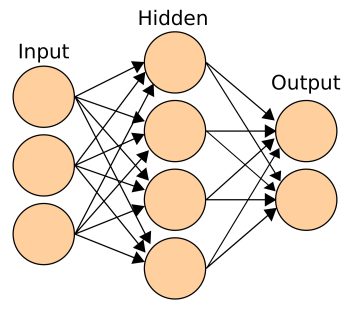
These neural networks require huge amounts of data to make accurate predictions and classifications. Artificial Neural Networks learn from these datasets in different ways:
- Supervised learning: Researchers use labeled datasets to train the model through a cross-validation process to classify data and predict outcomes accurately.
- Unsupervised learning: Researchers use unlabeled datasets to analyze and cluster (group) the data. The ability of this method to allow the algorithm to identify similarities and differences in data makes it useful for many tasks.
- Reinforcement Learning: This method is popular in robotics, where the algorithm learns in a reward-punishment style. This trial-and-error allows the machine to take actions that bring it closer to its goal.
Let us now explore how AI is integrated into smart homes.
How is AI integrated into Smart Homes?
AI is the core of smart home systems, the more advanced AI gets, the more it can smartify home environments by making the devices proactive. Smart homes use multiple devices to automate and enhance living, especially for impaired or senior individuals. Visually impaired, for example, can use home cameras and voice commands to facilitate their day-to-day lives.
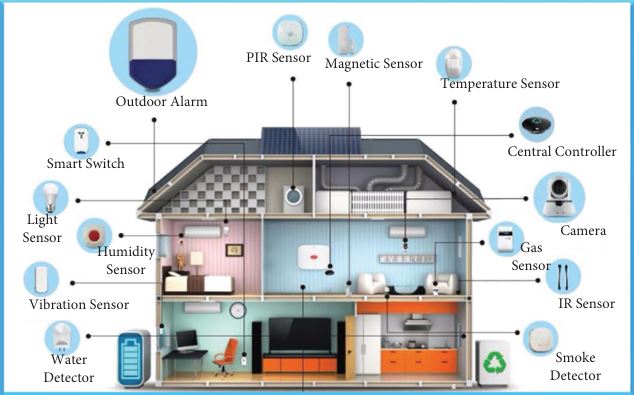
The user, AI, and devices have two main interaction models.
- Case A: A user can give commands directly to devices, and the AI within each device benefits the device itself. Engineers usually do this with edge computing technologies. This is best for use cases like healthcare, security, and energy management.
- Case B: A user can give commands to an AI on their phone or central controller using Alexa or Google Assistant. The AI controls each device accordingly, we usually implement this with cloud computing technologies. Useful for smart interactions and device management.
Smart Devices such as sensors, cameras, and appliances, are interconnected through the Internet of Things (IoT). These devices continuously collect data such as temperatures, energy consumption, motion detection, voice commands, and more. Using this information, the AI can make decisions, and predictions, and perform automation.
In edge computing, manufacturers can embed the AI model into the device itself, giving it the ability to process data without communicating with a cloud server. This reduces latency and enhances privacy, but could also limit performance depending on computational resources. Alternatively, cloud computing allows powerful servers to handle the processing.
Smart homes usually use a hybrid approach of interaction and computing models, but they also use multiple AI models to be the brains behind the scenes. In the next section, we’ll look at the key AI models used in smart houses.
Key AI Technologies in Smart Homes
Smart homes utilize a collection of AI models to do various tasks which can improve home functions and users’ comfort and even reduce energy consumption. Engineers integrate fields like Computer Vision (CV), Large Language Models (LLMs), Reinforcement Learning (RL), and more within houses. We’ll explore these fields and how they are integrated within the smart home ecosystem.
Computer Vision (CV)
Cameras, motion sensors, surveillance systems, etc., can use CV for remote control, monitoring of appliances, home security systems, and more. Computer vision technologies use machine learning algorithms to analyze and make predictions on image and video data even in real time.
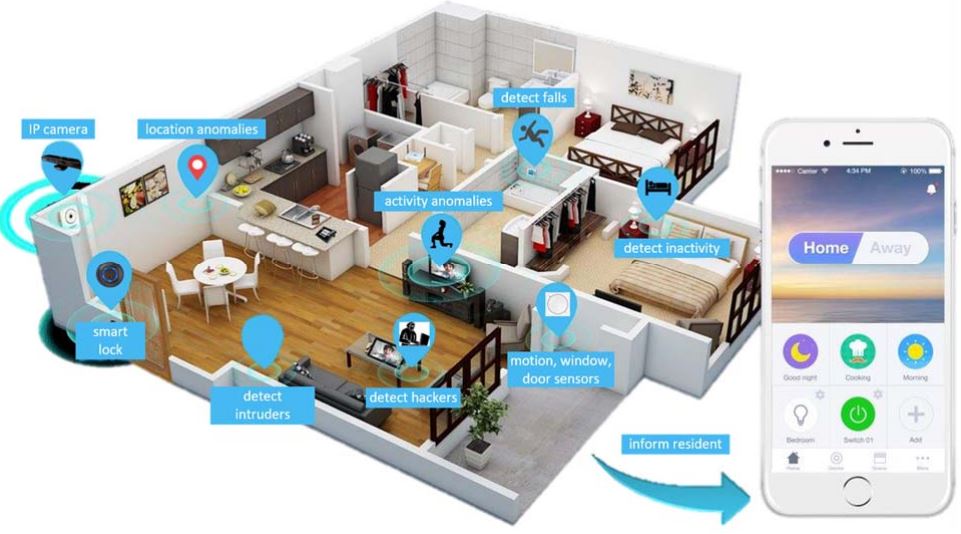
Smart devices can use AI models for object detection, recognition, and segmentation for various tasks. We can tune models and frameworks such as YOLOv10 and OpenCV for various real-time detection tasks such as theft, falls, inactivity, and activity. The two essential technologies used in CV models are deep learning techniques and variations of Convolutional Neural Networks (CNNs) or Recurrent Neural Networks (RNNs) for video streams in applications like smart homes. Below are some use cases of devices that can benefit from these computer vision models.
- A smart lock can be placed on the front door, with a video doorbell, that will prevent, detect, and report intruders.
- People can use in-home cameras for various tasks like fall detection and reporting, and detecting activity or movement to turn off the lights, TVs, or other smart home products, creating an energy-efficient smart home. Even for appliances like fridges, these models help detect and find out what groceries are missing or over and need to be re-purchased.
Those are just some use cases of this technology within smart homes. However, computer vision alone cannot make a home smart, so let’s explore some other AI technologies engineers use in smart home devices.
Natural Language Processing (NLP)
NLP is a field of AI that allows computers to recognize, understand, and generate text and speech. NLP has seen major advancements over the recent years with the rise of generative AI creating powerful Large Language Models (LLMs). These models are used in our everyday applications such as GPT-4, Alexa, and other voice assistants.
When it comes to smart homes, LLMs are the key to home automation. In a smart home, one can consider an LLM as a Large Action Model (LAM), as it would not only understand and generate text and speech but also take action based on inputs. Those inputs can come directly from the user through voice commands or the collected data and home settings.
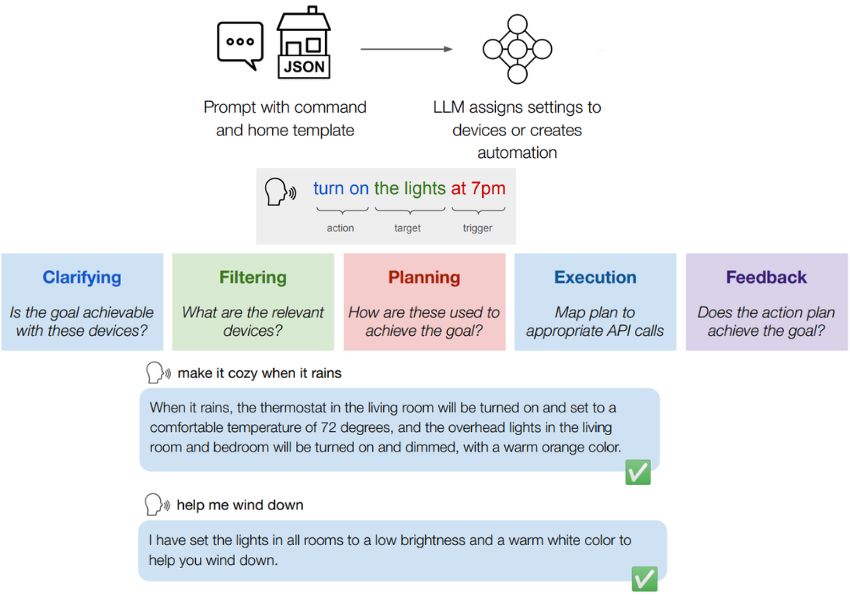
Combined with other smart devices and AI models, LLMs can do various tasks for home automation. LLMs can act as the trigger for actions or as the response. LLMs can make every other device voice-controlled, like the smart lighting or the door lock. It can also give you feedback from the smart thermostat for temperature and other readings, or the smart plug for energy consumption levels.
We can use devices like Amazon Echo (Alexa) with smart devices through an app and Wi-Fi. The model can also be integrated within the house itself and can be spoken to through speakers around the house.
Now, what if we wanted the models in our home to learn over time? Or perhaps include some robotics? In the next section, we will get into reinforcement learning and its usage in smart homes.
Reinforcement Learning (RL)
Reinforcement learning (RL) in smart homes can optimize efficiency, automation, and comfort, by integrating human feedback and activity data. This is especially useful for energy management or home robotics. For energy-efficient smart homes, engineers are focusing on intelligent Home Energy Management Systems (HEMS). Those systems usually need a few components like advanced metering infrastructure with smart meters and RL systems to learn patterns and optimize them.
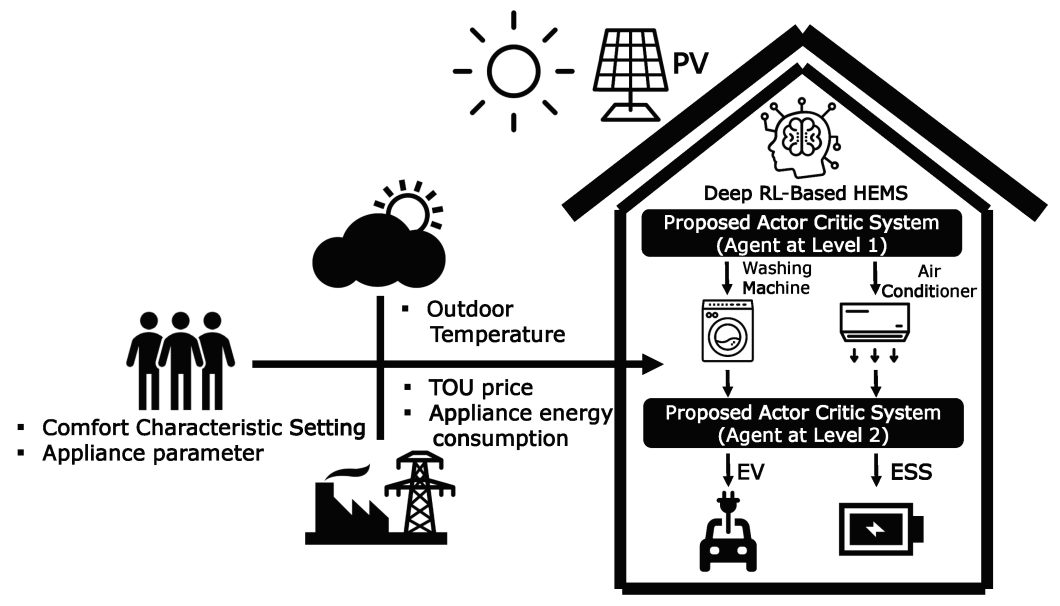
Home devices and energy sources supporting the RL-based HEMS allow it to optimize the energy consumed by the devices. However, those systems use transfer learning techniques to adapt to each house’s needs, as training this system from scratch would mean a lot of trial and error.
Furthermore, those systems can be controlled by user preferences and settings, giving us more control over how much optimization to make. RL-based methods can be used within smart homes in a few other ways, mentioned below.
- Personalized home environment: RL with other AI models can make your smart home even more personalized by scheduling appliances like washing machines depending on your daily activity. An RL agent can also learn to adjust lighting levels, temperature, or music based on your activity or time of the day.
- Predictive Maintainance: Based on sensor data, RL agents can predict if a certain device or appliance is due for maintenance. This would avoid costly repairs or replacements.
- Security: RL can increase the effectiveness of smart home security, by learning to identify and respond to threats based on previous data and patterns.
Let us now take a quick look into open-source libraries and frameworks for smart home automation.
Open-source Libraries and Frameworks for Smart Homes
openHAB
This is an open-source home automation software coded in Java. This software allows you to fully customize smart devices and create automation for them through the user interface. It also allows you to install and utilize multiple plugins depending on your needs.
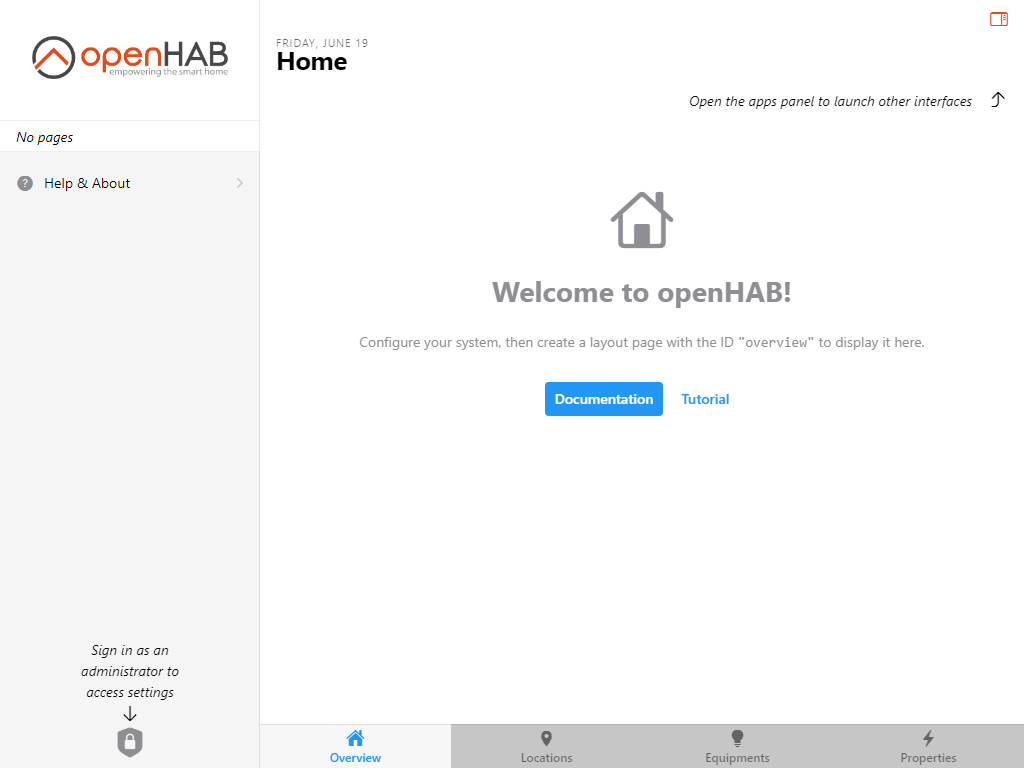
Home Assistant
This software is also fully open-source and free. It serves as a smart home hub allowing you to control all smart home devices in one place. The developers of this software focused on privacy and local control. So, this software is independent of any specific IoT ecosystem.
Node-RED
This is an open-source development tool, made for developers to facilitate the process of connecting hardware devices, APIs, and online services. It is a flow-based, low-code tool with a web browser flow editor that you can use to create JavaScript (JS) functions.
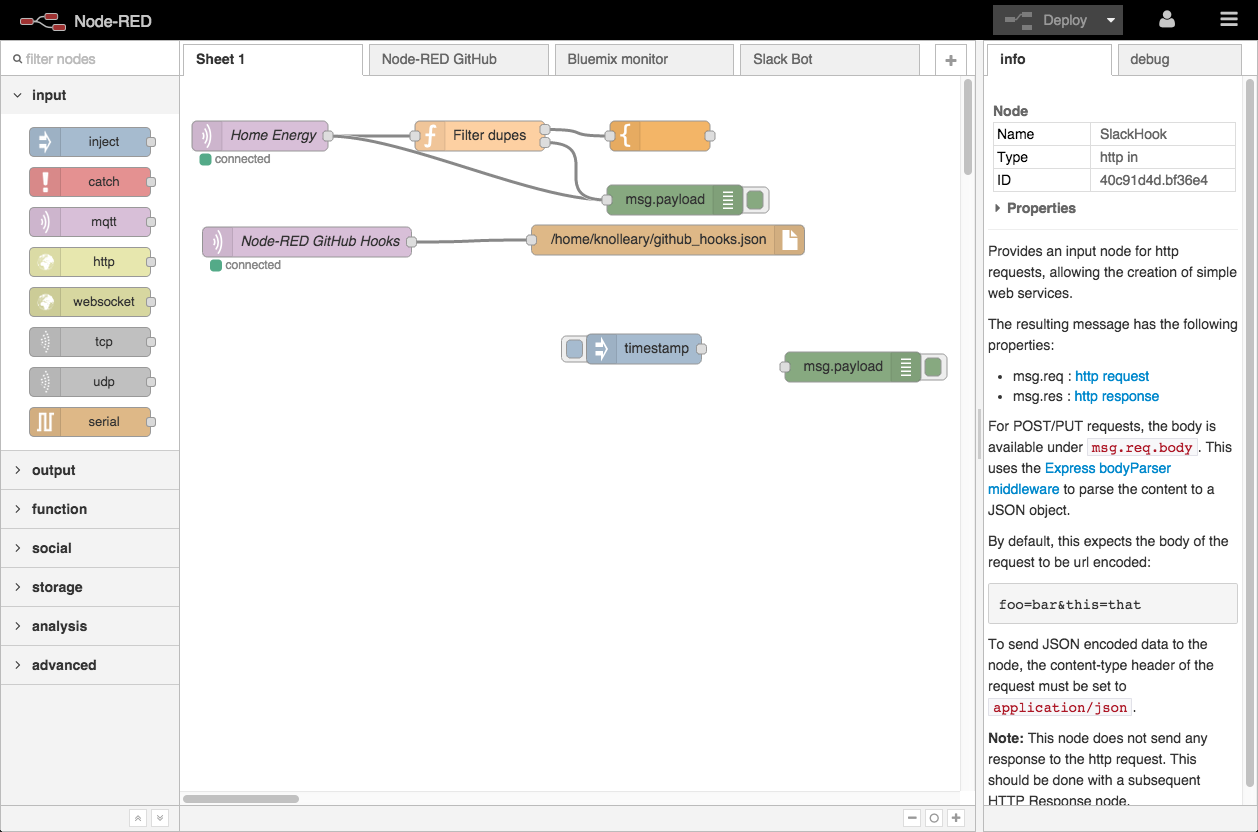
There are more models and frameworks developers use to build smart home automation, connections, and infrastructure. OpenCV is one great example, it gives a collection of CV models to build different applications like smart home systems. For infrastructure, there is a wide range of sensors or devices like Raspberry Pi and Arduino, which can all help you build the perfect smart home system model.
What’s Next For Smart Homes?
As we have seen, AI-powered smart homes are no longer sci-fi. AI technologies like computer vision, natural language processing, and reinforcement learning are already transforming the way we live. These technologies are making homes more responsive, comfortable, and efficient.
However, as smart home technology continues to evolve, we must know it comes with challenges. Data privacy and security are a big concern. We need systems that protect our personal information and ensure it’s used ethically and responsibly.
The way this is going we know we’ll have a future where our homes adapt to our needs. By embracing AI in a thoughtful and balanced way, we can create living spaces that are smart, secure, sustainable, and truly enhance our quality of life. The possibilities are vast, and there is a big space for innovation in this field.
How will AI shape the smart homes of the future? The answer lies in the hands of engineers, researchers, and users working together. We can build a future where technology seamlessly integrates into our lives, empowering us to live smarter.
Read our other blogs related to the concepts discussed in this blog for further understanding.
- The Real Business Value of Computer Vision
- Home Robots: the Stanford Roadmap Paper
- Being a Computer Vision Engineer
- Understanding Visual Question Answering (VQA)
